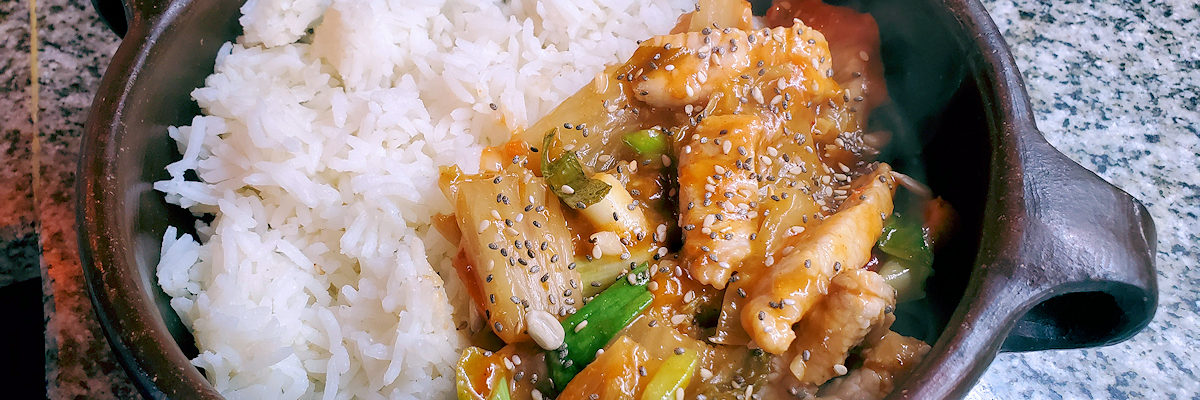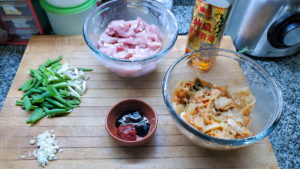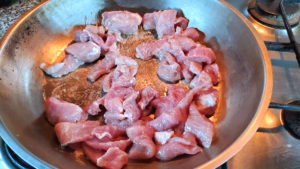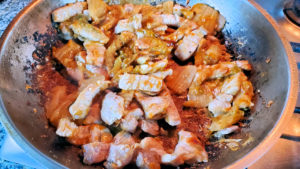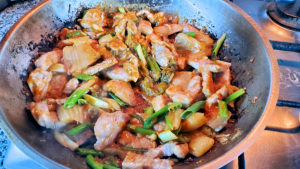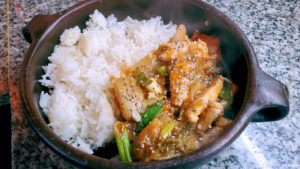People can get a little nationalistic and/or protectionist about cuisine. Often not even their own native cuisine. You’ve even seen me do it when railing against the use of cream in carbonara sauce, despite the fact that there are probably more restaurants out there in the world serving it made that way than without. Some of them are even in Italy. I had a recent message exchange with a Malaysian friend of mine over kimbap, the Korean version of Japanese norimaki – seaweed wrapped sushi rolls.
I think I really threw him for a loop when I noted that the origin of sashimi, originally narezushi (where fish was cured and preserved by wrapping it in fermented rice, and then the rice was discarded and the fish eaten), and then later sushi, is believed to be the Mekong Delta, two millenia ago, rather than Japan itself, and that that same origin point led to the Chinese yusheng, which is another raw fish preparation, where originally the fish was cured in rice vinegar, and morphed into today’s raw fish and shredded vegetable salad.
In a lot of places in the world there have been many cultural exchanges. But back to Korea and Japan. There was a roughly 35 year period during the early 20th century, 1910 to 1945, the Showa period, when Japan “annexed” Korea. I’m not going to get into the whole controversy over the politics and legalities of what was done, but focus on that it was a period when there was a lot of cultural back and forth exchange.
There’s the aforementioned kimbap, definitely – the two key differences from norimaki being that the rice in kimbap is seasoned with sesame oil rather than rice vinegar (and, kimbap can often be made with brown or black rice as well), and that the fillings are cooked rather than raw, and often are not fish – various meats, cheese, and vegetables are common.
Another dish is the one that I just know all of you have been sitting around wondering… “just what the heck is buta-kuimchi?” and “how do I make it for dinner?” Because it’s the sort of thing that you’re just the sort of people who would sit around wondering such a thing. You’re my readers, my friends, my co-wonderers.
So, the origins of buta-kuimchi, which translates directly as pork-kimchi, seem to be from the Korean jeok-bokkeum, or pork-saute/stir-fry. It’s a classic dish found in almost any Korean restaurant, basically of sliced pork, seasoned with chili paste, and sauteed with garlic, ginger, onions, and kimchi, and served alongside rice. The Japanese version, buta-kuimchi, has toned down the spice, significantly, no doubt to fit local palates, and incorporated a couple of different ingredients and techniques.
This one’s fairly straightforward and, knowing you, you have all these ingredients on hand, right? In the back, about a half kilo (1 pound) of pork tenderloin, sliced and then coated with a splash of rice wine (either sake or another rice wine is fine, if you don’t have it, a little dry sherry will work), and some potato starch (again, another starch would work – tapioca, arrowroot, corn) and left to sit for about 30 minutes. There’s a bottle of sesame oil, a cup of kimchi (drained of as much of its juice as you can – squeeze it out), a tablespoon each of oyster sauce and gochujang, Korean chili paste, a minced garlic clove, and a couple of green onions, sliced into 2 cm (3/4″) pieces. Also some neutral cooking oil off to the side.
In a skillet, saute the pork in a mix of about 2 Tb of neutral oil and 1 Tb of sesame oil, until lightly browned. That potato starch is going to stick to the pan, don’t worry about it, most of it will come off when you add in the kimchi, and what doesn’t will come off with a steel wool pad later.
Add the kimchi and the garlic and continue cooking for about five minutes.
Add the oyster sauce and chili paste and cook for about another minute, stirring to coat it all well.
Add the green onions and cook for a minute to soften them. Taste for seasoning – if you want it spicier, add a little more chili paste, if you want it a touch sweeter, add a splash more of sesame oil. I haven’t found it to need any salt, but if you feel it does, you can use a pinch or two of salt, or a splash of soy sauce.
And, serve, with rice. To pretty it up slightly, I sprinkled it with a little seed mix of sesame seeds, chia seeds, and sunflower seeds. Just sesame would have been more traditional, but I like the mix.
